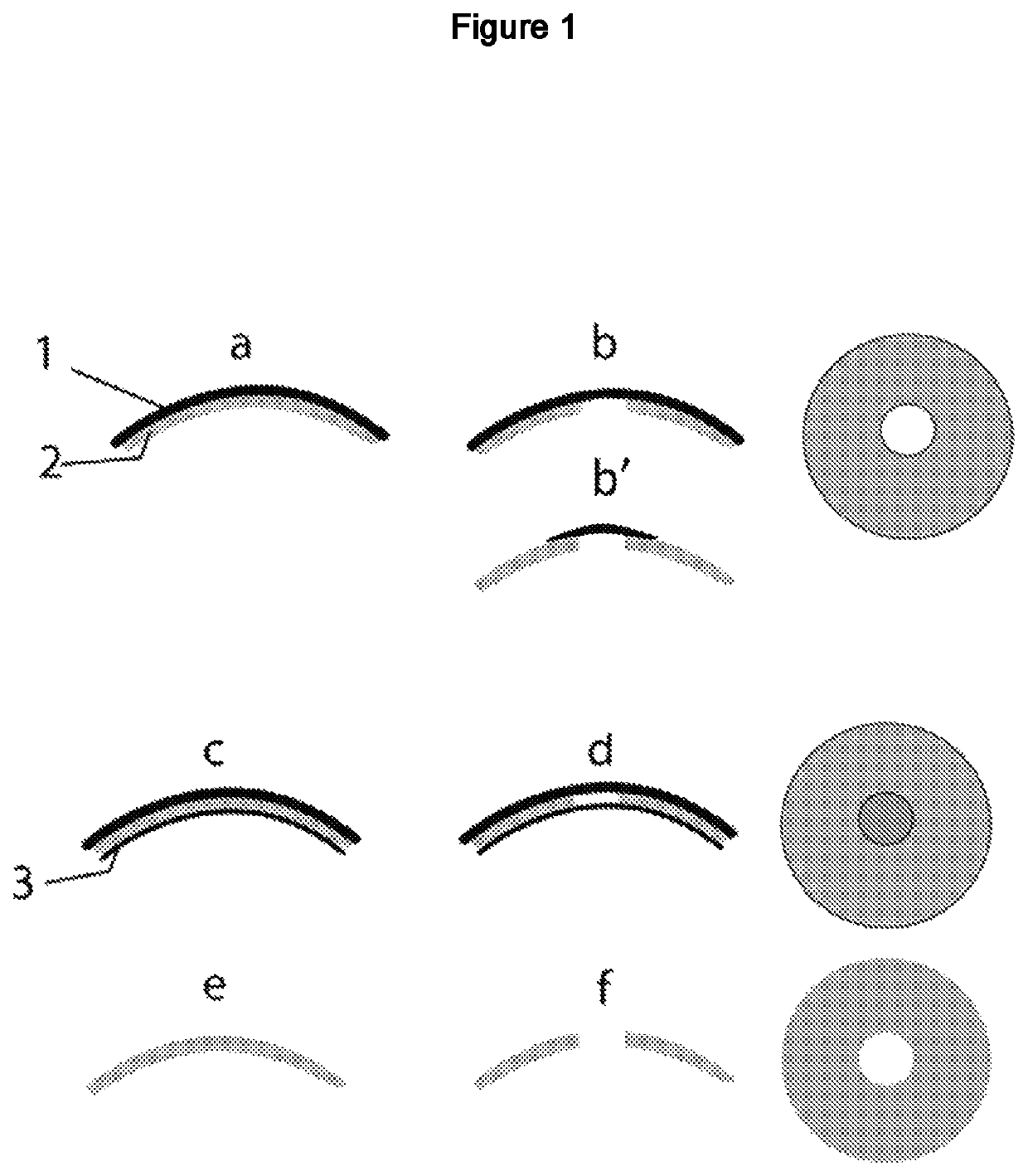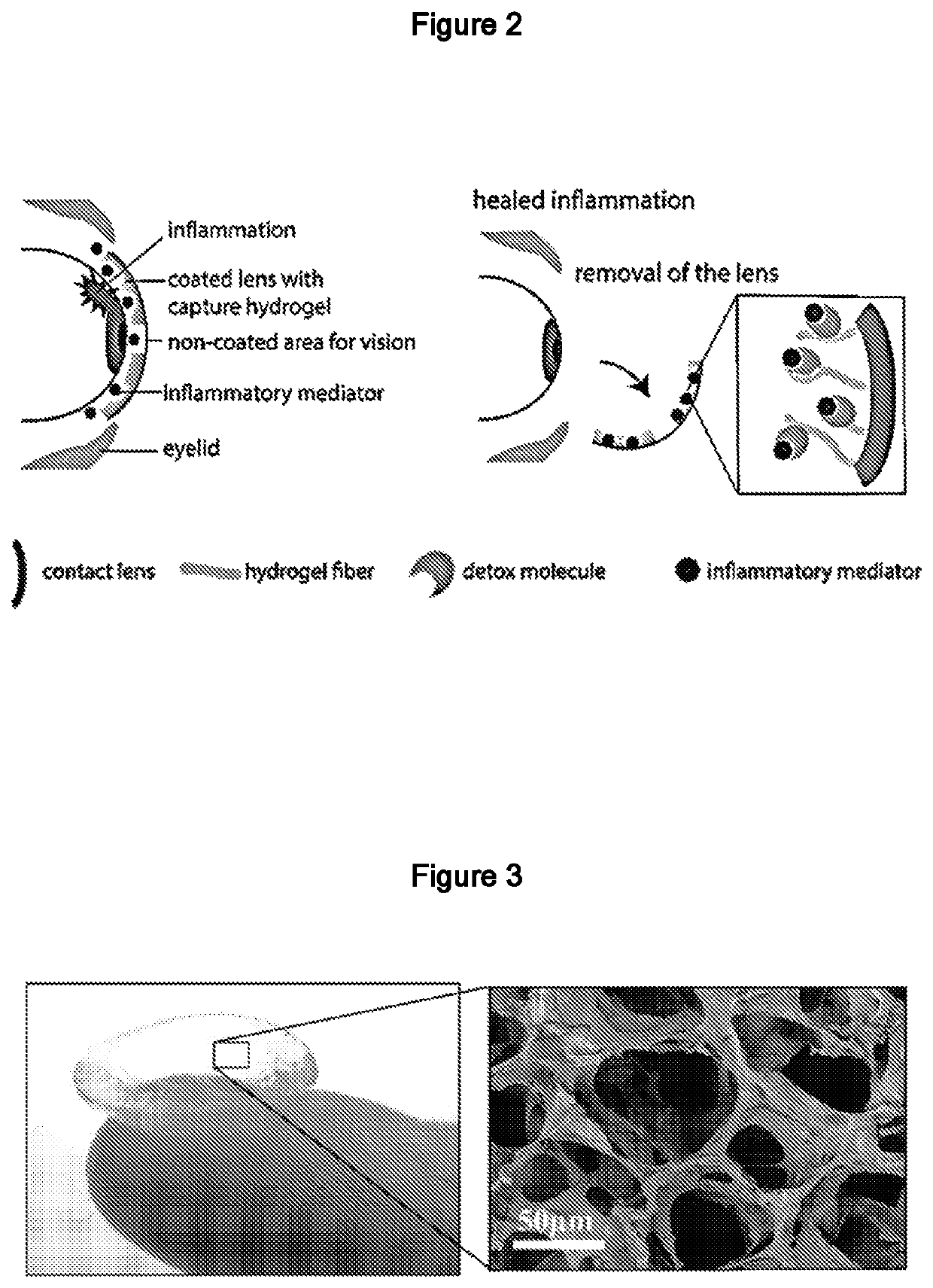Ophthalmic contact lens with compressible affinity matrix
a contact lens and affinity matrix technology, applied in the field of ophthalmic pathologies, can solve the problems of opportunistic infections, unintended systemic effects, and difficulty in permanent treatment of patients, and achieve the effect of reducing or avoiding the need for anti-inflammatory drugs
- Summary
- Abstract
- Description
- Claims
- Application Information
AI Technical Summary
Benefits of technology
Problems solved by technology
Method used
Image
Examples
example
[0074]The invention proposes a novel approach to the treatment of chronic inflammation of the ocular surface: by continuously removing inflammatory mediators via the adsorption thereof to a specifically designed capture contact lens (FIG. 2), inventors aimed at interrupting the underlying self-sustained vicious cycle. Indeed, it is the common theme of current anti-inflammatory therapy to add exogenous drug molecules to influence internal signalling events of inflammation, with the major drawback of severe side-effects in chronic application. The presented novel taking-up approach dramatically lowers the side-effects; moreover, it can be assumed that important synergies could establish with existing treatments, for instance by lowering the dose of anti-inflammatory drugs necessary for a given treatment goal.
[0075]The identification of target patient populations that may benefit from a contact lens of the invention, and the identification of the technical and safety characteristics to...
PUM
 Login to View More
Login to View More Abstract
Description
Claims
Application Information
 Login to View More
Login to View More - R&D
- Intellectual Property
- Life Sciences
- Materials
- Tech Scout
- Unparalleled Data Quality
- Higher Quality Content
- 60% Fewer Hallucinations
Browse by: Latest US Patents, China's latest patents, Technical Efficacy Thesaurus, Application Domain, Technology Topic, Popular Technical Reports.
© 2025 PatSnap. All rights reserved.Legal|Privacy policy|Modern Slavery Act Transparency Statement|Sitemap|About US| Contact US: help@patsnap.com


